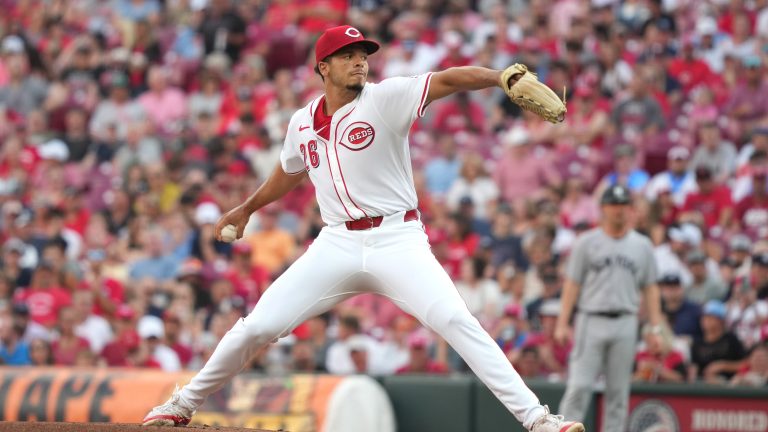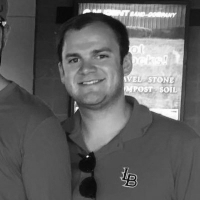The Cincinnati Reds Should Prepare to Take a Risk at the Deadline
The Cincinnati Reds have played the middle for long enough. At this year's trade deadline, it is time for them to make a move to win now.

As of July 26th, the Reds are 54-50 and one game back from the final Wild Card spot. Being in the mix for a Wild Card is not new to the Reds, who have hovered around that level for a couple of years. Not good enough to be established, not bad enough to be full-blown sellers.
Since selling off Luis Castillo and Tyler Mahle, Cincinnati’s past couple of deadlines have been relatively uneventful. Minor bullpen movement, adding ancillary players off the waiver wire, and other moves that do not truly move the needle. And to be honest, I get why they did it.
A young core was still finding their feet and getting established. The Reds did not truly know what level of players they had for that season, and into the future. Now, with a better understanding of what these players really are, the needs are clearer.
Lucas Picklesimer from our team wrote a great piece about the individual names and moves the Reds could make, but I’m here to talk about the big picture. A 10,000-foot view of why this year’s deadline is crucial for the Reds now and into the future.
Regardless of the individual names, the Reds need to roll the dice and take a risk. Going to the roulette table and putting $20 on black every spin won’t rob your pockets, but you also won’t have a story about how much you won.
I’m not saying the Reds need to leverage every valuable piece they have in hopes of winning a World Series this season, but knowing when to play a bigger hand is important and that time is now.
Why Now is the Right Time
Like I mentioned before, I understand why the Reds were not as aggressive in the past couple of seasons and I actually agree with their strategy – up until this past offseason. Figuring out what you actually have in your young players, while letting them get their feet wet, is just part of growing pains.
Now with a better understanding, the Reds need to address their needs. The front office has already shown early signs of turning the corner from rebuild to contending by bringing in manager Terry Francona, trading for Brady Singer and Gavin Lux, and signing Jeimer Candelario. Right or wrong, those are moves only teams that have turned the corner would make.
Cincinnati is getting great pitching from Andrew Abbott, Nick Lodolo, and Hunter Greene, who is working his way back to the rotation from injury. Chase Burns has flashed in a big way and is ironing out rookie mistakes while Brady Singer and Nick Martinez are fine back end options.
The Reds rotation has enough to be competitive in a playoff series. Now, the front office needs to realize the same group of players who continue to show you they are not impact bats, but rather complementary pieces, needs an upgrade.
If the Reds are able to add a player who can help them now and into the future, they need to make that move. They have built up a farm system deep enough that trade from it should be something they can stomach. If you draft and develop well, this shouldn’t be an issue.
In some ways, it feels like the Reds are hoping the stars align and enough of their middling players all play to the best of their ability, at the same time, and the team shows its full potential. Once again, an approach that might not burn you but comes with plenty of limitations.
These players have played themselves into a spot where they are in the playoff hunt. If there’s anything we have learned from years past, crossing your fingers and hoping for the best a low percentage play.
Where the Reds are in the Team Life Cycle
Although not a bulletproof concept, small market teams typically move in lifecycles. Tear down, prospects debut, a season or two of seasoning, a competitive window, repeat. The Reds, in my opinion, are in the competitive window phase.
No matter what the voices from the front office say, we all know building a sustainable winner year after year after year, as a small-market team, is rare. The Brewers, Guardians, and Rays have done it to some extent and are often used as examples. What about the others who consistently don’t do it? Have the Reds shown any ability to match this continuous winning model in the past?
Reality is, the Reds are much more likely to work in windows than churn out winning seasons year over year. Because of that, they need to capitalize on winning teams responsibly and be aggressive when the time is right.
The last real taste of success, 2010, 2012, and 2013, showed some aggressiveness with the Scott Rolen and Mat Latos trades. Since then, the Reds have had a few moves (Puig, Bauer) but not much success. How far has the safe approach gotten them? How many of those prospects in the few big deals come back to bite them?
Ownership (yes, I know I agree with you on those cats) brought in Terry Francona, knowing he would not be a long-term solution. After firing David Bell, blame, right or wrong, is going to fall on Nick Krall’s shoulders next.
I’m sure Nick Krall knows this. Another season that falls flat could mean he loses his job. Why not take a risk and try to take an above team to being something more? You have years of not being aggressive as a sample size, and look where you are.
You don’t need to move Chase Burns to make a deal, but sacrificing a top prospect, or even capitalizing on Lodolo’s value in a unique trade scenario, to give this team a better chance now and roll the dice makes sense.
Final Thoughts
If your argument is that this team is not good enough to justify buying, I hear you. I heard you last year and the many years before that. But, how do they get good enough in order to justify buying? We know it will not be in the free agent market. Hoping all the prospects click, in the same season, with few injuries, on the same timeline?
This season is different because it’s step one. You don’t have to empty the farm at one last chance. You can add players to help now and into the future. You built up a farm system from trades and high draft picks that you can afford a rental, if that is the preferred route, without sinking the system.
What you can’t afford is another year of the same process that spits out .500 level teams. You can’t afford to hope for the best when Elly De La Cruz is on your team and you are getting this level of pitching. You can’t afford another word salad post-deadline speech from Krall about how this came up short or that just wasn’t in the cards.
Show the fans you are not afraid of what could go wrong, but instead excited about the possibility of what could go right. Show them effort.

